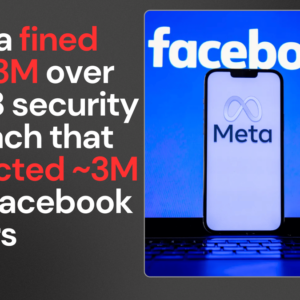Explore the fascinating world of the dark web as we debunk common myths and reveal the reality behind this enigmatic online space. Discover what’s true, what’s exaggerated, and why understanding the dark web is crucial in today’s digital age.
The dark web is often shrouded in mystery and intrigue, capturing the imagination of many while simultaneously instilling fear. Common misconceptions abound, leading to a distorted view of what the dark web truly represents. Is it merely a haven for criminals, or does it serve legitimate purposes? In this blog post, we will unravel the myths surrounding the dark web and shed light on its reality, helping you understand this complex part of the internet.
Myth 1: The Dark Web is Just for Criminals
One of the most pervasive myths about the dark web is that it is solely a playground for criminals engaging in illegal activities such as drug trafficking, arms sales, and hacking services. While it is true that these activities can occur on the dark web, this perspective overlooks its legitimate uses.
Legitimate Uses of the Dark Web
- Privacy Protection: For individuals living under oppressive regimes, the dark web can be a refuge. It allows users to communicate freely without fear of surveillance or censorship. Journalists and activists often use the dark web to share sensitive information securely.
- Freedom of Speech: The dark web provides a platform for those who wish to express dissenting opinions without facing repercussions. This can be particularly important in countries where freedom of speech is restricted.
By understanding these legitimate uses, we can begin to see the dark web as more than just a criminal underworld.

Myth 2: You Can Only Access the Dark Web with Special Software
Another common misconception is that accessing the dark web requires complex or obscure software. While tools like Tor (The Onion Router) are indeed essential for navigating this hidden part of the internet, they are not as complicated as many believe.
How to Access the Dark Web
- Tor Browser: The most popular method to access the dark web is through the Tor browser, which anonymizes your internet traffic by routing it through multiple servers. This makes it difficult to trace your online activity.
- Security Importance: While accessing the dark web can be done relatively easily with Tor, it’s crucial to prioritize security. Users should be aware of potential risks, including malware and phishing attempts. Always ensure you are using a VPN and follow best practices for online safety.
This myth highlights a broader issue: many people fear what they do not understand. By demystifying access methods, we can encourage safer exploration of this part of the internet.
Reality: The Dark Web’s Size and Scope
The dark web is often perceived as a small segment of the internet, but its size and scope are much larger than many realize.
Comparing Sizes
- Surface Web vs. Dark Web: The surface web—the part of the internet indexed by traditional search engines—makes up only about 4% of the entire internet. In contrast, estimates suggest that the dark web constitutes around 6%, with vast amounts of data hidden from conventional search engines.
- Diverse Uses: Beyond illegal activities, the dark web hosts forums for discussions on various topics, whistleblower platforms, and even marketplaces for legal goods and services. This diversity underscores its complexity and importance in fostering free communication.
Understanding the sheer scale of the dark web can help dispel myths about its limited nature.
Myth 3: Everything on the Dark Web is Illegal
Many people assume that anything found on the dark web must be illegal. While there are certainly illegal activities taking place, this blanket statement ignores the variety of content available.

Legal vs. Illegal Activities
- Legal Activities: Many users access the dark web to participate in forums discussing privacy rights, digital security, or even technology advancements. There are also marketplaces that sell legal products like books or art.
- Illegal Activities: Conversely, illegal activities do exist—such as drug sales or hacking services—but they represent only a fraction of what is available on the dark web.
This myth serves as a reminder that not everything associated with the dark web is inherently bad; context matters significantly in understanding its content.
Conclusion
The dark web is a multifaceted realm that encompasses both legitimate and illegitimate activities. By debunking common myths—such as its exclusive association with crime or misconceptions about accessibility—we can foster a more nuanced understanding of this hidden part of the internet. Awareness is key recognizing both its dangers and its potential benefits allows us to navigate it more safely and effectively.
Stay informed about online safety and security! Educate yourself on how to protect your privacy online and consider exploring reputable resources for further reading about cybersecurity and safe internet practices.
For more insights into navigating online spaces safely, check out these resources:












